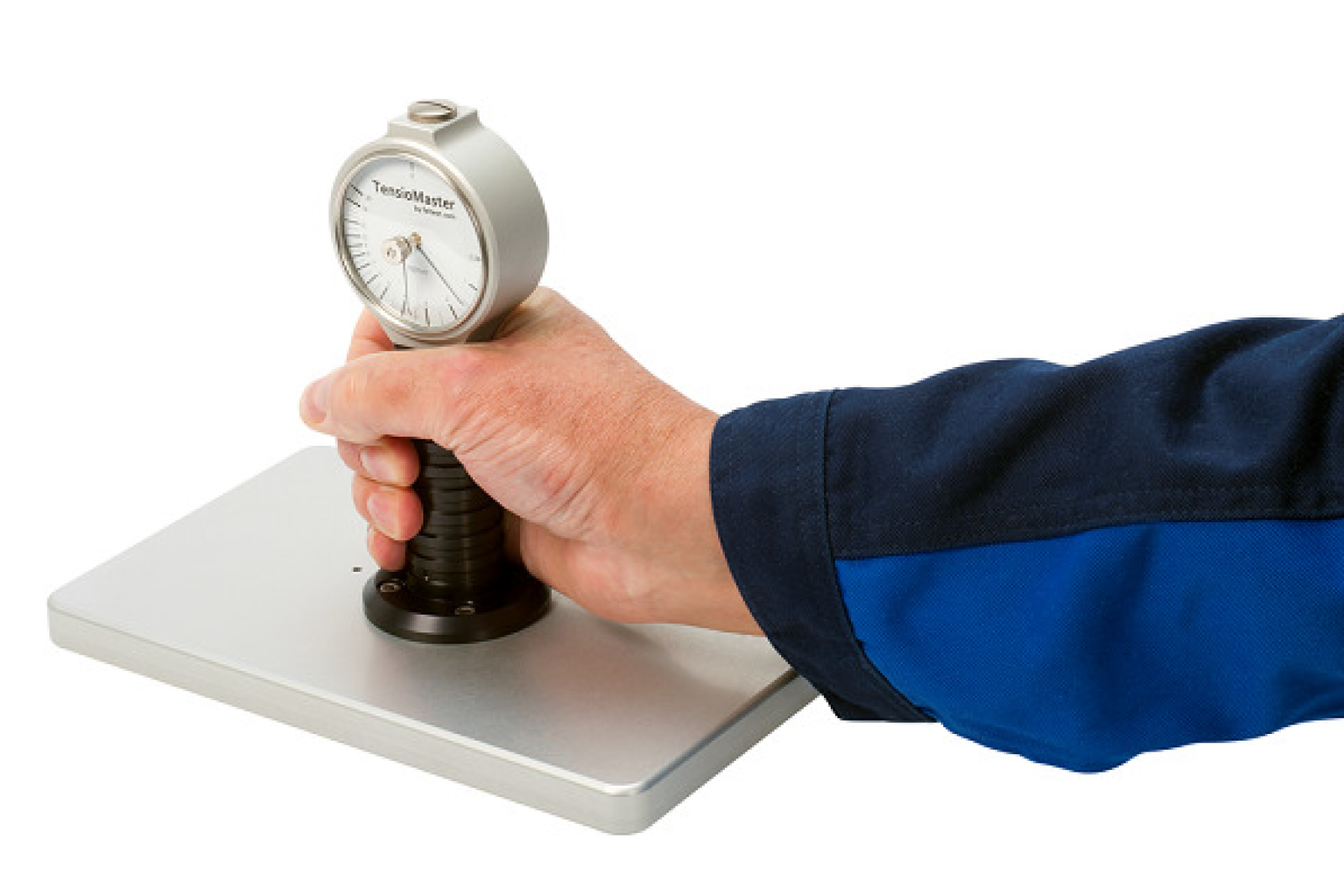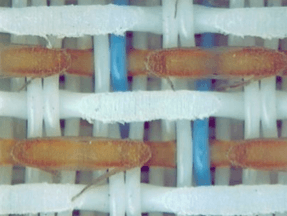Beware of low fabric tension

Don't push too hard...
In my previous blog article, I reflected on 2 major causes and the resulting problems of fabrics running with a tension that is too high.
In this blog article, I focus on the signs and consequences of forming fabrics running at a tension too low for optimal performance of your paper machine. One of the causes of low tension is improper use of the tension gauge.
Due to the measuring principle of a mechanical tensometer, it is more difficult to accurately measure a slack fabric than a high-tensioned fabric. Many operators use too much force during the measurement, simply because they learned this gives them repeatable test results. Unfortunately the repeatability has no relation to the accuracy of this measurement…
Now that it’s clear why many papermakers push the instrument too hard, what are the consequences? The push itself puts additional tension on the part of the fabric where tension is measured. The result is a read off tension value that is significantly higher than if the fabric were still running ‘free’ (without a tension gauge pushing it down).
So if you want the fabric to run on 6 kN/m and you measure 6 kN/m, you’re done, right?
Not quite so.
In reality the wire could be running at 5 or even 4 kN/m. If you knew the real value is much lower, you would surely increase the machine tension.
Let me point out some serious low-tension problems:
Slip between drive rolls and fabric Low fabric tension allows slip between the drive rolls and the fabric. This slip will wear out the fabric faster. But there is a much bigger problem…
Reduced machine output
A common reaction when slip occurs is to reduce the vacuum on the suction boxes. This will cause a decrease of dewatering capacity in the forming section, and thus reduced machine output. This is by far the most important problem caused by low forming fabric tension and should be avoided at all times.
Damage to dewatering elements
Dewatering elements should have sharp lead-in edges to ‘cut’ the water hanging on the roll side of the fabric. Slack fabrics, carrying a high load of water and fibers, tend to hang in between dewatering elements. Not only will this cause accelerated wear of both the fabric and the sharp lead-in edges of the plastic or ceramic foils. As a consequence, the dewatering efficiency of these elements is also strongly reduced, leaving the papermaker with less dry content and increased costs for replacing dewatering elements.
Guiding problems
Guiding rolls have a problem with slack fabrics. As can be read in our whitepaper Solving Guiding Problems on Forming Fabrics, the guiding roll needs a certain friction between fabric and guiding roll to guide the wire in the right direction. When the tension is too low, extra manipulation and corrections of the guiding system are needed, creating extra fabric wear. The before mentioned problems – drive slip, hanging between elements and extensive guiding – all have one thing in common: they lead to extended fabric wear. Obviously this causes extra costs for replacement fabrics and production costs. But faster fabric wear involves another risk…
Fraying
Strong wear forces working on the fabric will cause the yarns on the roll side of the fabric to show fraying or wear burrs. Shown at below picture:

The frayed fabric will partly block the dewatering channel and limit its dewatering capacity. You also run the risk of congesting the dewatering channel in the fabric as fiber particles get ‘hooked in’ by the fray.
Strong fabric wear is a killer for your machine output, where the lost production due to poor dry content competes with the lost production due to an increased number of stops to replace fabrics.
So what can you do?
First, you need a reliable instrument, like the Feltest TensioMaster, to measure the fabric tension to know when to tension your fabric and how much you need it to tension.
Then, in order to get an accurate measurement with your mechanical tensometer, you need to use as little force as possible. Gently push the instrument onto the running fabric so that the leading edges barely touch the fabric and then immediately move it back and read the dial. Read more about the basic working principle of mechanical tensometers in this article.
Never underestimate the importance of using high quality precision tools in the right way to provide you with accurate performance values, like crucial fabric tension.
Your periodic investments for regular service or timely replacement of measuring instruments far outweigh the enormous costs that are likely to occur when you don’t.
Feel free to contact me or the other Feltest team members to help you ensure that your paper machine is running as smoothly and profitably as possible.
So remember DDPP - Daily Data Powers Production.
Toward better Paper Machine Clothing,
Marcel

